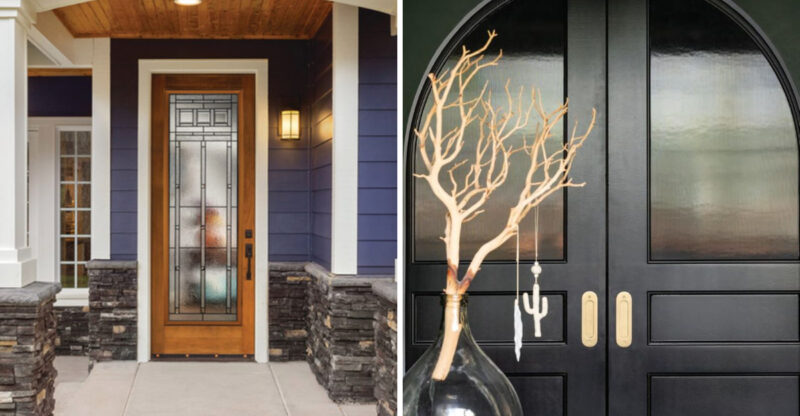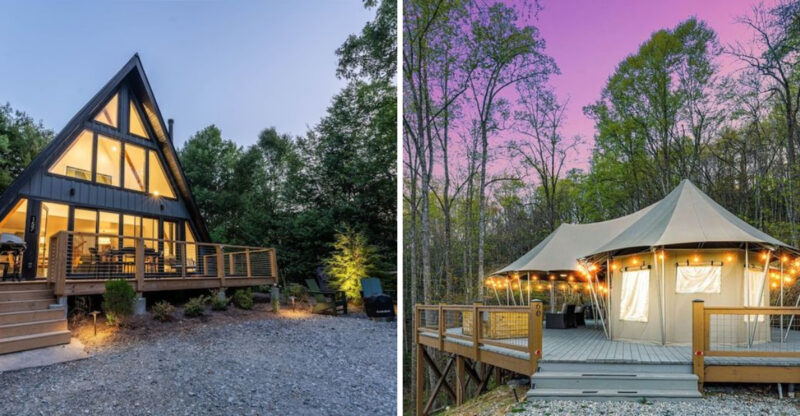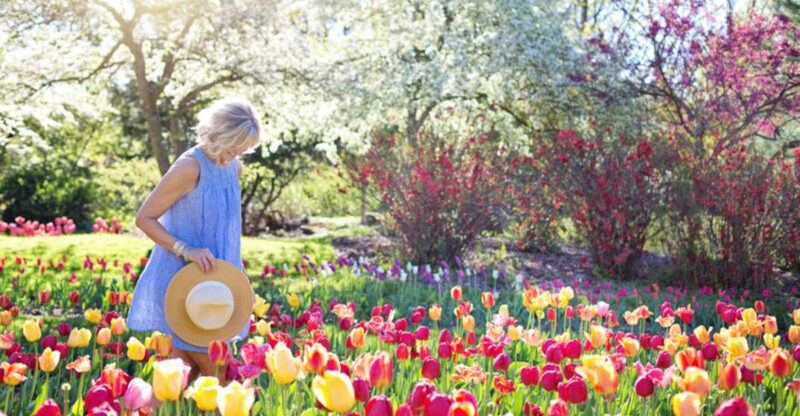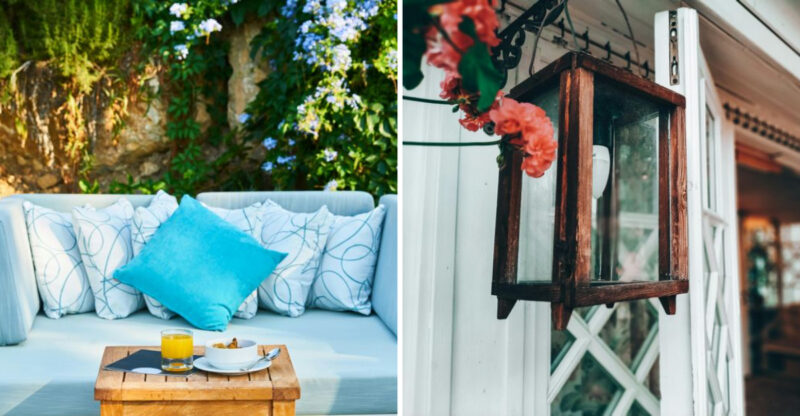9 Timeless Exterior Styles Found Across Sacramento Neighborhoods
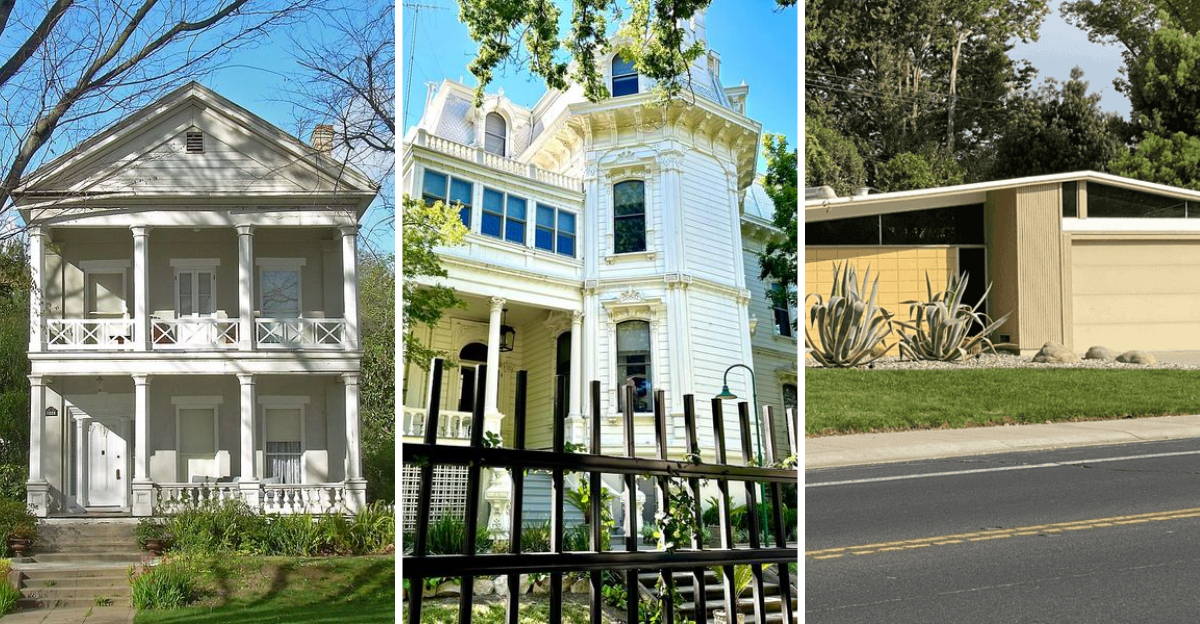
Sacramento’s neighborhoods tell a story through their historic homes.
Walking through Oak Park, Land Park, or East Sacramento feels like stepping back in time as these vintage architectural styles showcase our city’s rich past.
From ornate Victorian mansions to sleek Mid-Century Modern designs, these exterior looks have shaped Sacramento’s unique character for generations and continue to influence modern home designs today.
1. Craftsman Bungalow: Front Porch Perfection

Hand-crafted details make Craftsman bungalows instantly recognizable throughout Curtis Park and Land Park. Low-pitched roofs with wide eave overhangs shelter these charming homes, while exposed rafter tails and decorative brackets add character to every corner.
The signature front porch creates the perfect neighborhood gathering spot, supported by tapered square columns atop stone or brick pedestals. Inside, built-in cabinets and window seats showcase the craftsmanship that defines this early 1900s style.
Original Craftsman homes feature natural materials river rock foundations, cedar shingles, and redwood siding that have weathered beautifully for over a century. Their modest size and practical layout continue attracting homebuyers who appreciate authenticity and historical charm.
2. Victorian Queen Anne: Towers of Elegance
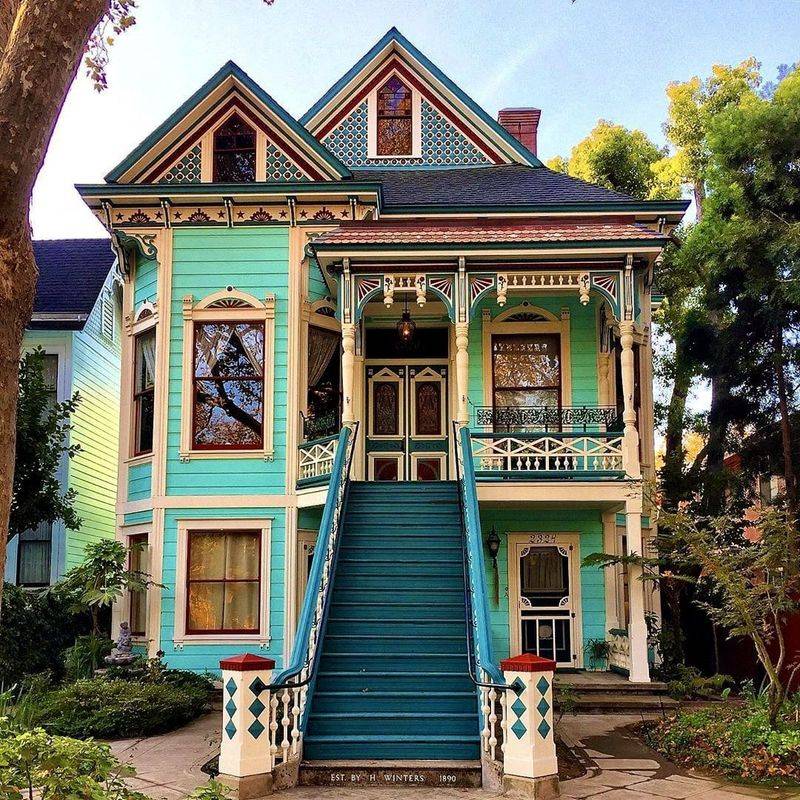
Strolling through Alkali Flat or Boulevard Park reveals Sacramento’s most ornate architectural treasures. Victorian Queen Anne homes, built during the late 1800s railroad boom, feature asymmetrical façades crowned with dramatic turrets and towers that catch the eye from blocks away.
Intricate spindle work adorns wrap-around porches while decorative trim, often called ‘gingerbread,’ frames windows and gables. These homes showcase rich color schemes sometimes four or five hues highlighting every architectural detail.
Bay windows, stained glass, and fish-scale shingles add to their distinctive personality. Though maintenance-intensive, these grand homes represent Sacramento’s golden age of architecture. Many have been lovingly restored to their original glory, preserving the craftsmanship of a bygone era.
3. Colonial Revival: Symmetrical Sophistication
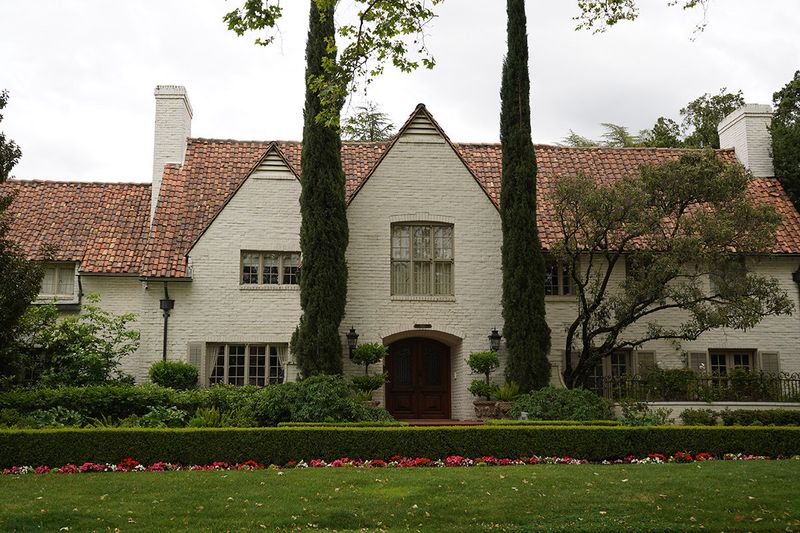
If you’ve wandered through East Sacramento’s Fabulous Forties, you’ve admired Colonial Revival homes with their perfect symmetry and stately presence. These dignified residences feature centered front doors crowned by decorative pediments or fanlight windows that welcome visitors with formal elegance.
White-painted exteriors contrast with black shutters flanking evenly-spaced windows across the façade. Two-story designs with side-gabled roofs create a balanced, orderly appearance that never goes out of style.
Many Colonial Revival homes incorporate classical columns supporting covered porticos, giving them a distinguished governmental look. This architectural style became especially popular after Philadelphia’s 1876 Centennial Exhibition sparked renewed interest in America’s colonial past. Today, these homes remain sought-after for their timeless design and spacious interiors.
4. Tudor Revival: Old World Charm
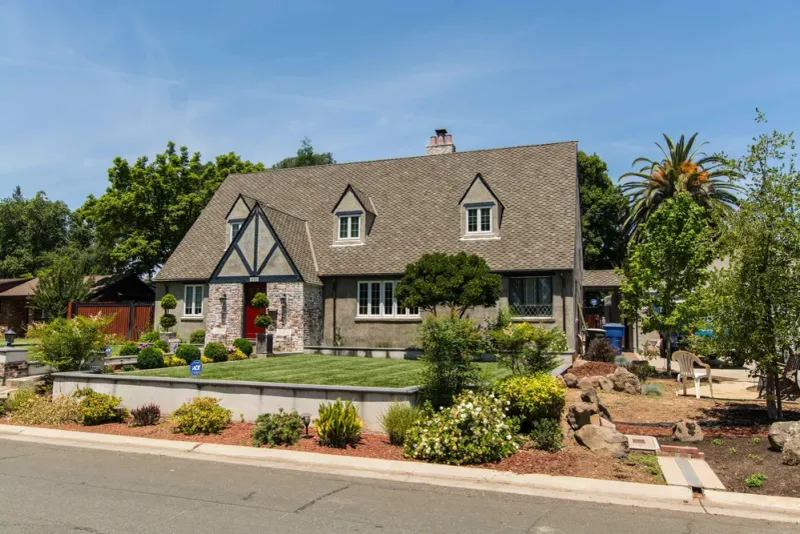
Dark timber beams criss-crossing white stucco walls immediately identify Tudor Revival homes throughout Sacramento’s established neighborhoods. These romantic dwellings transport viewers to medieval English villages with their steep gabled roofs and decorative half-timbering.
Massive chimneys topped with decorative chimney pots dominate the roofline, while arched doorways often feature rustic plank doors with ornamental ironwork. Stone or brick exteriors ground these homes, sometimes climbing partway up walls in a technique called ‘catslide.’
Multi-paned diamond windows complete the storybook appearance. Built primarily between 1920-1940, Sacramento’s Tudor Revivals offered wealthy homeowners a taste of European sophistication. Their distinctive silhouettes remain among the most recognizable in older neighborhoods like East Sacramento and Land Park, where they command attention amid more conventional designs.
5. Mediterranean Revival: Sun-Soaked Serenity
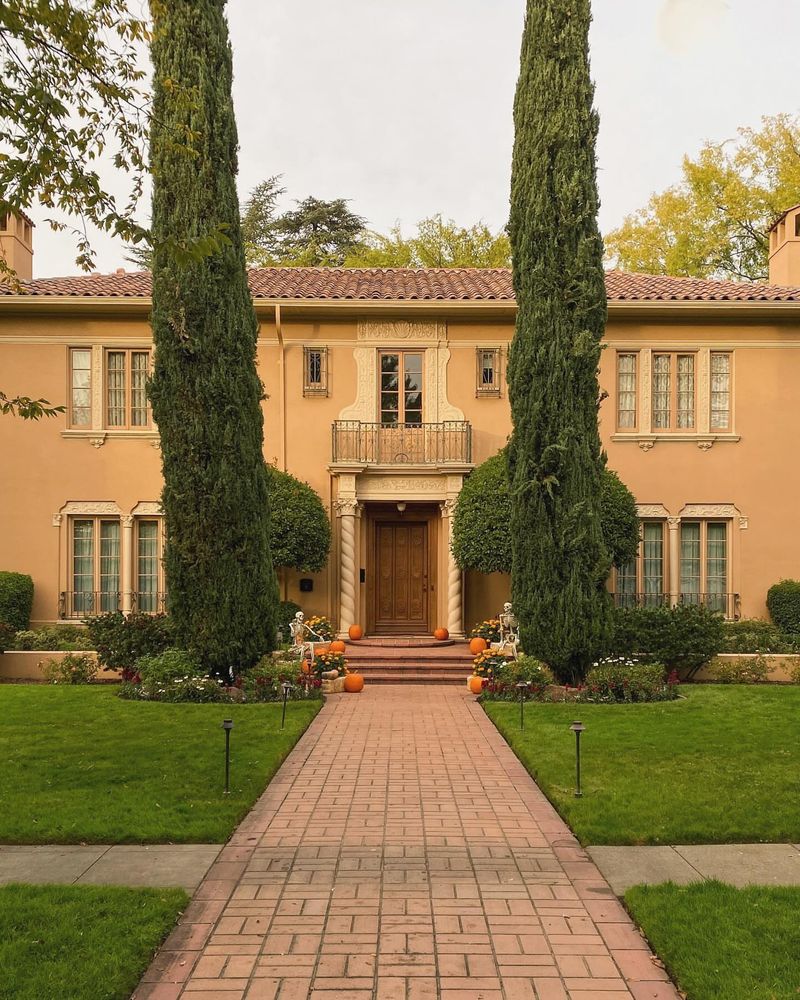
Red tile roofs glow warmly in Sacramento’s sunshine, making Mediterranean Revival homes instantly recognizable in neighborhoods like East Sacramento and Land Park. These homes, inspired by seaside villas, feature smooth stucco exteriors in soft earth tones that evoke the Italian and Spanish countryside.
Arched windows and doorways create graceful entryways, often highlighted by decorative wrought iron details or colorful ceramic tile accents. Courtyards and patios extend living spaces outdoors, embracing California’s indoor-outdoor lifestyle.
Many Mediterranean Revivals incorporate low-pitched roofs with broad eaves supported by decorative brackets. This architectural style flourished during the 1920s-1930s when Americans developed a romantic fascination with Mediterranean destinations. Their enduring appeal comes from both aesthetic beauty and practical adaptation to Sacramento’s hot climate, providing thick walls that naturally insulate against summer heat.
6. Spanish Colonial Revival: Mission-Inspired Magic

White stucco walls crowned with terracotta roof tiles define Spanish Colonial Revival homes scattered throughout Sacramento’s historic districts. This distinctive style draws inspiration from California’s mission heritage, incorporating architectural elements that Spanish settlers brought to the New World.
Rounded arches frame doorways and windows, while covered walkways called arcades connect indoor and outdoor spaces. Decorative elements include colorful tile work, carved wooden doors, and ornate iron fixtures that add handcrafted warmth.
Bell towers and quatrefoil windows reference church architecture, giving these homes a spiritual connection to California’s past. Though similar to Mediterranean Revival, Spanish Colonial homes typically feature less ornamentation and more asymmetrical designs. Their thick walls and small windows were originally practical adaptations to hot climates, but now provide the added benefit of energy efficiency in Sacramento’s summer heat.
7. Second Empire/Italianate: Mansard Magnificence

Distinctive mansard roofs define Second Empire homes in Sacramento’s oldest neighborhoods, creating instantly recognizable silhouettes against the sky. These steep, four-sided roofs with dormer windows maximize upper-floor living space while adding dramatic flair to the streetscape.
Tall, narrow windows crowned with elaborate hoods draw the eye upward, emphasizing the vertical proportions these homes share with their Italianate cousins. Both styles feature decorative brackets supporting wide eaves and often incorporate ornate cupolas or belvederes that crown the roofline.
Bay windows and wraparound porches add dimensional interest to the façades. These architectural styles reached peak popularity during the 1860s-1880s when Sacramento was establishing itself as California’s capital city. Though less common than other vintage styles, these grand homes represent the city’s earliest prosperity and continue to serve as impressive landmarks in historic districts like Boulevard Park.
8. Mid-Century Modern: Eichler Innovation

Floor-to-ceiling windows erase the boundary between indoors and outdoors in Sacramento’s Mid-Century Modern homes, particularly in South Land Park Hills and River Park. Developer Joseph Eichler brought this revolutionary architectural style to Sacramento in the 1950s, creating neighborhoods of homes featuring flat or low-pitched roofs with wide overhanging eaves.
Open floorplans center around atriums or courtyards that flood interiors with natural light. Exposed post-and-beam construction eliminates the need for many interior walls, creating flowing spaces that feel surprisingly contemporary today.
Simple, clean lines and integration with nature define these architectural gems. Original features include mahogany paneling, globe lighting, and geometric decorative elements that epitomize mid-century style. Though once considered radical departures from traditional housing, these homes now represent a cherished architectural period that perfectly captured post-war American optimism and innovation.
9. Greek Revival/Neoclassical: Pillared Grandeur
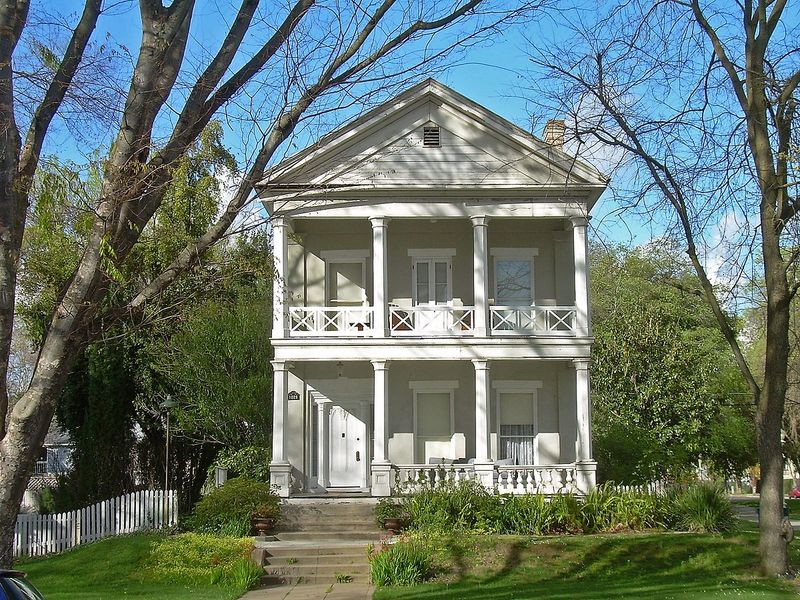
Majestic columns supporting triangular pediments instantly identify Greek Revival and Neoclassical homes throughout Sacramento’s historic districts. These imposing structures draw direct inspiration from ancient Greek temples, creating a sense of permanence and dignity that made them popular choices for government buildings and wealthy homeowners alike.
Symmetrical façades feature centered doorways often flanked by sidelights and topped with transom windows or fanlights. White is the traditional color for these homes, enhancing their monumental appearance against Sacramento’s blue skies.
Low-pitched gabled roofs with wide cornices complete the classical profile. Though most Sacramento examples date from the early 1900s revival period rather than the original 1830s-1850s Greek Revival era, they faithfully reproduce the style’s key elements. Their enduring presence, particularly around Capitol Park, connects Sacramento’s built environment to Western civilization’s architectural foundations while projecting an image of stability and refinement.

